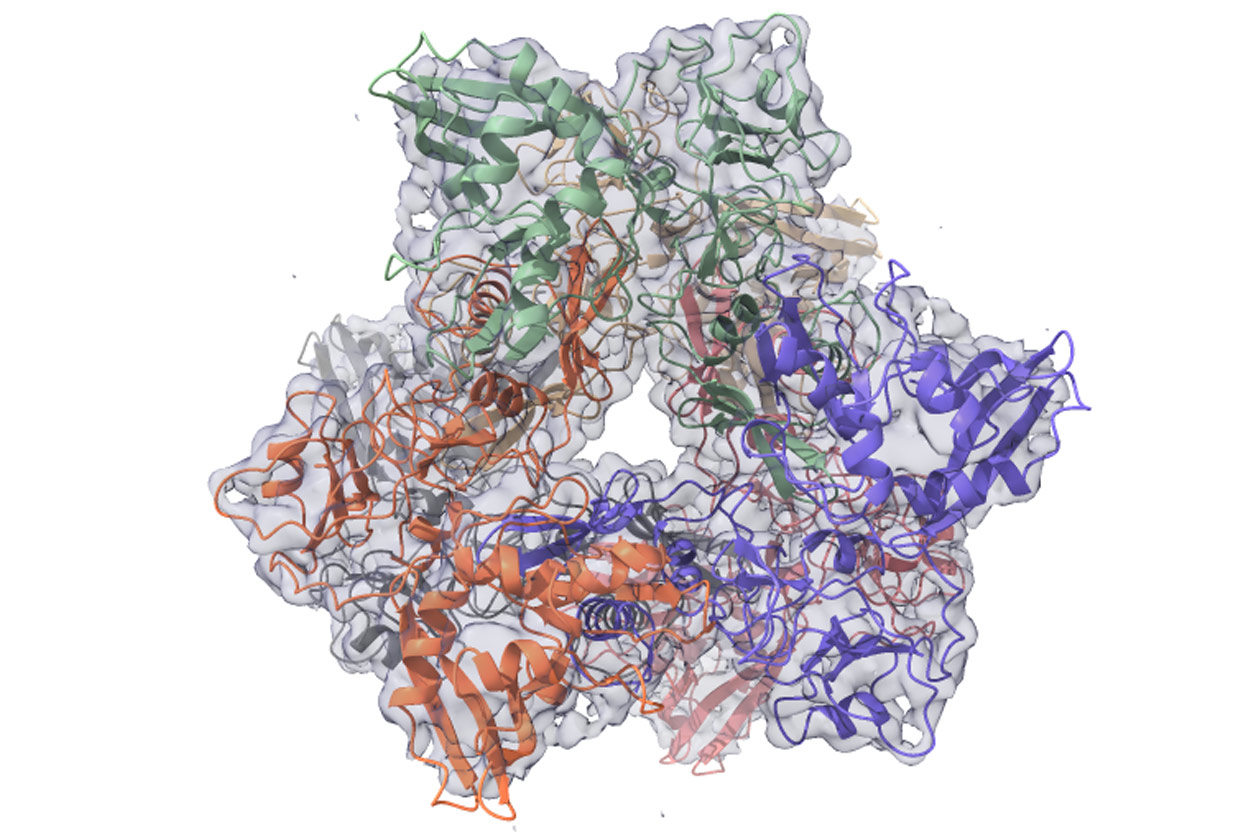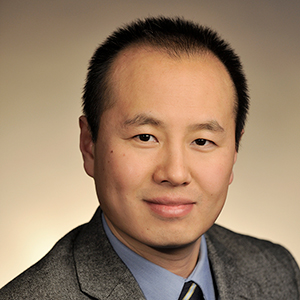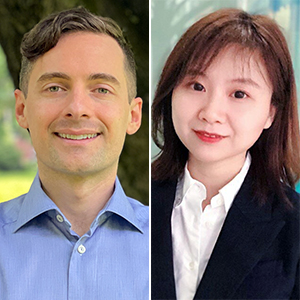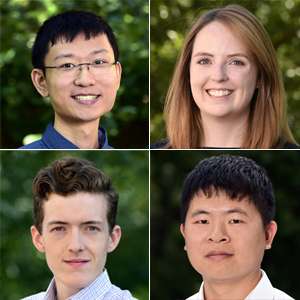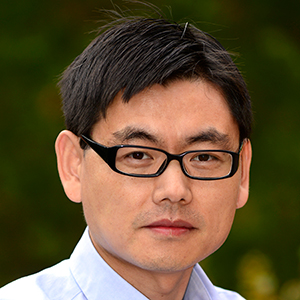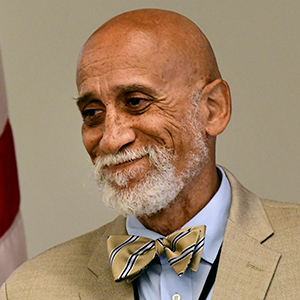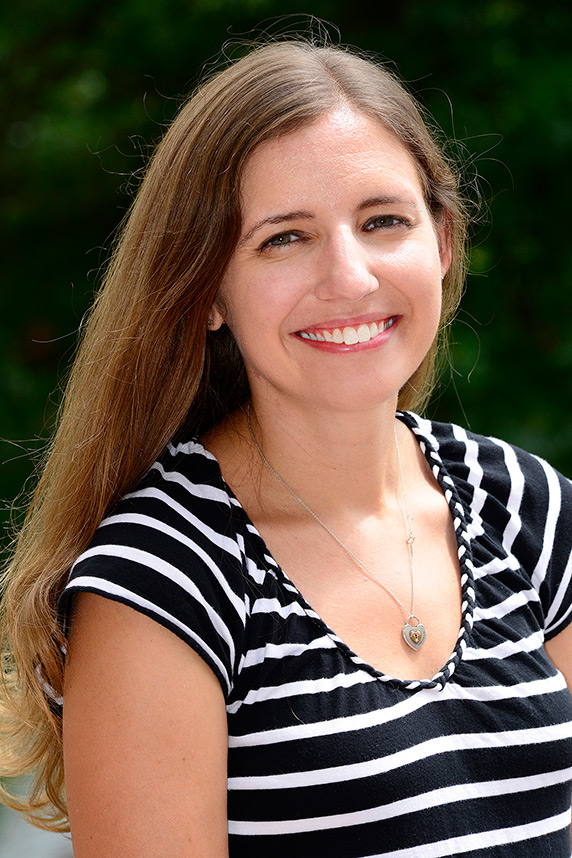 Stanley likened the process of figuring out ribosome construction to putting together a piece of furniture. “Sometimes it’s complicated,” she said. (Photo courtesy of Steve McCaw / NIEHS)
Stanley likened the process of figuring out ribosome construction to putting together a piece of furniture. “Sometimes it’s complicated,” she said. (Photo courtesy of Steve McCaw / NIEHS)Robin Stanley, Ph.D., an Earl Stadtman Investigator who heads the NIEHS Nucleolar Integrity Group, has been awarded tenure by the National Institutes of Health (NIH).
NIEHS Scientific Director Darryl Zeldin, M.D., announced the honor April 5. “Robin was my first tenure-track investigator hire as scientific director in 2014,” he said. “We are all very proud of her accomplishments over the past seven years.”
Stanley’s mentor at NIEHS, John Cidlowski, Ph.D., also expressed excitement about her recognition. He is deputy chief of the Signal Transduction Laboratory. “It’s a well-deserved tenure,” Cidlowski said. “She has exceeded all of our expectations scientifically here at the institute.”
He noted that Stanley had published 17 papers during her time on the tenure track, serving as senior author on each. “That’s extraordinary!” he observed.
Two research passions
Stanley said two abiding scientific interests that have defined her career thus far.
First and foremost, she practices structural biology — the science of shedding light on a biological entity by visualizing its structure. “If you want to understand how a protein or a nucleic acid or anything from inside the cell works, you have to be able to see it, because that will tell you so much about what’s going on, and its function,” she said.
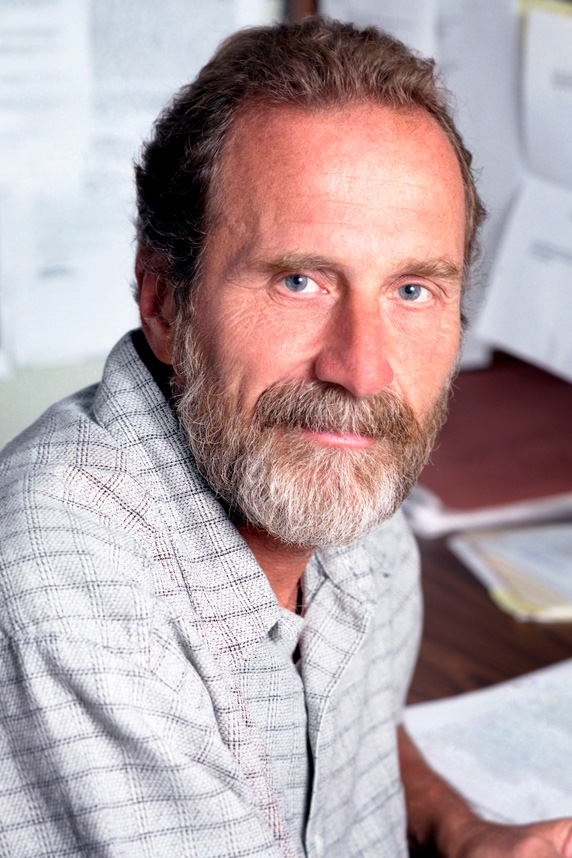 Cidlowski praised Stanley’s ability to communicate complex scientific data clearly to a general audience. (Photo courtesy of Steve McCaw / NIEHS)
Cidlowski praised Stanley’s ability to communicate complex scientific data clearly to a general audience. (Photo courtesy of Steve McCaw / NIEHS)Stanley began her research career by employing X-ray crystallography to define structures. More recently she and her team have been among the foremost users of the cryo-EM microscope at NIEHS.
“Cryo-EM has been an amazing technique over the last few years,” she said. “When I came here [in 2014], I was hired as a crystallographer. There was no cryo-EM microscope. And now, several years since we got the cryo-EM facility, it’s just amazing to see the change, to see how much the institute has embraced and adopted cryo-EM.”
Stanley’s second research interest is ribosomes, which are macromolecular machines within all living cells that make our proteins. Stanley’s group concentrates on discovering how they are assembled.
All about the ribosomes
“The ribosome is a hugely fundamental part of the cell,” she said. “You cannot survive without ribosomes.” These cellular particles decode messenger RNA to help build proteins. Proteins in turn support critical biochemical processes.
She credits cryo-EM with facilitating considerable progress in ribosome research. “It has been incredibly beneficial in helping us look at those machines and figure out their components and how they work,” she explained.
The research is certainly paying off, as Stanley’s group has published four studies selected as an NIEHS Paper of the Year between 2017 and 2020 (citations below).
Stanley also takes her mentoring responsibilities quite seriously, for which she was recognized in 2019 as NIEHS Mentor of the Year. “I want to make sure that not only am I training the people in my lab to be scientists, but I’m giving them the opportunities to work on what they need to work on to get where they want to go,” she noted.
Fateful journey
Stanley is a North Carolina native, having grown up in the Robeson County town of Lumberton. She completed a postdoctoral fellowship at NIH in Bethesda, Maryland, and joined NIEHS in 2014.
“I was just so thrilled that I got the interview and then got the job, because it was literally a dream come true. NIEHS is the perfect place for me,” she said.
Citations:
Hayne CK, Schmidt CA, Haque MI, Matera AG, Stanley RE. 2020. Reconstitution of the human tRNA splicing endonuclease complex: insight into the regulation of pre-tRNA cleavage. Nucleic Acids Res 48(14):7609–7622.
Lo YH, Sobhany M, Hsu AL, Ford BL, Krahn JM, Borgnia MJ, Stanley RE. 2019. Cryo-EM structure of the essential ribosome assembly AAA-ATPase Rix7. Nat Commun 10(1):513.
Pillon MC, Sobhany M, Stanley RE. 2018. Characterization of the molecular crosstalk within the essential Grc3-Las1 pre-rRNA processing complex. RNA 24(5):721–738.
Pillon MC, Sobhany M, Borgnia MJ, Williams JG, Stanley RE. 2017. Grc3 programs the essential endoribonuclease Las1 for specific RNA cleavage. Proc Natl Acad Sci U S A 114(28):E5530−E5538.
(Ernie Hood is a contract writer for the NIEHS Office of Communications and Public Liaison.)





